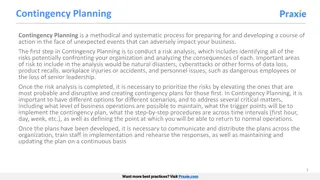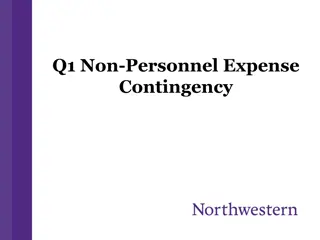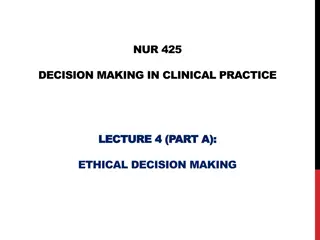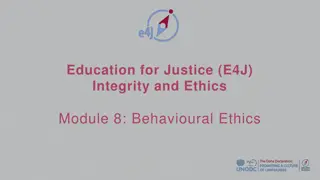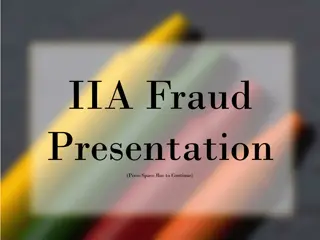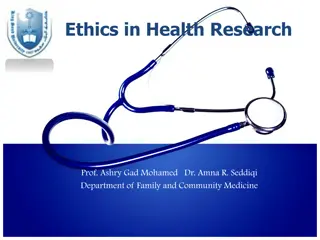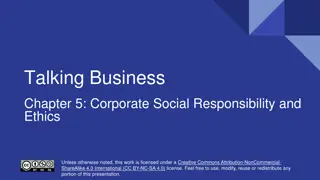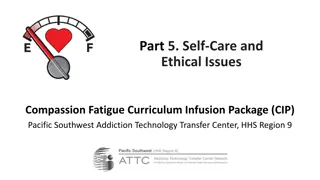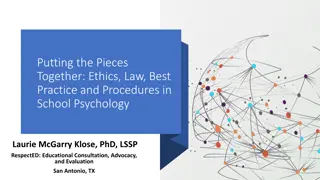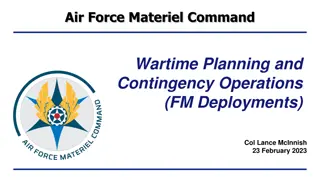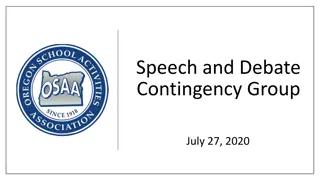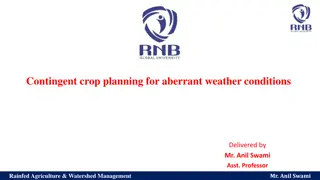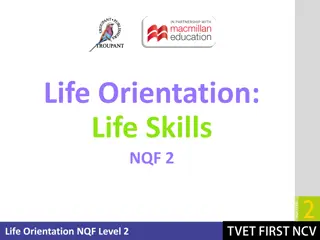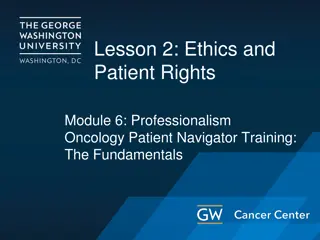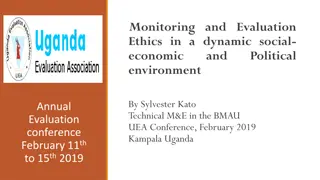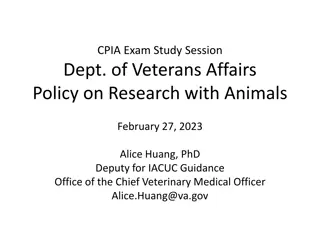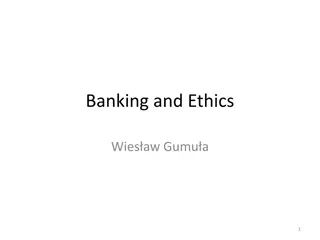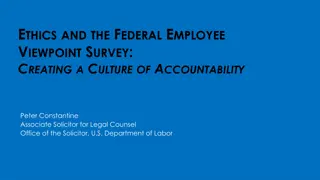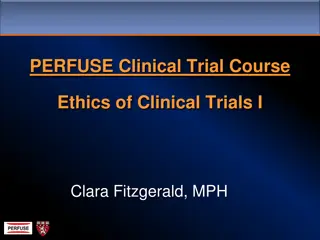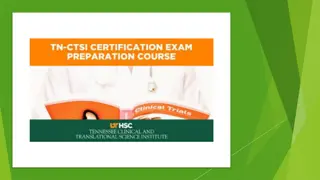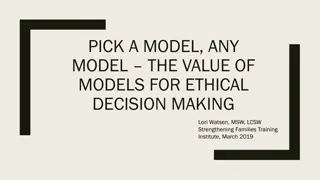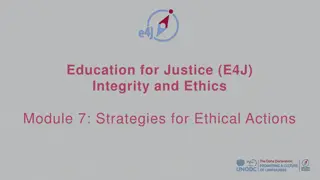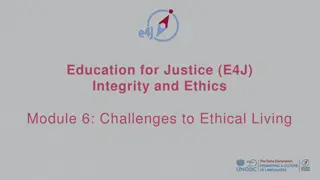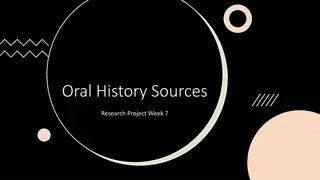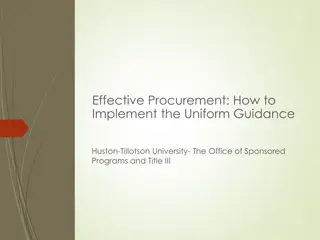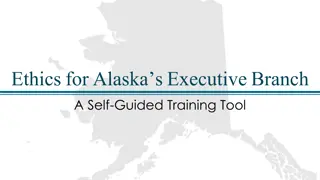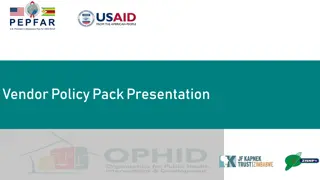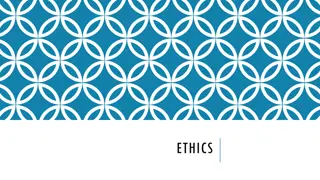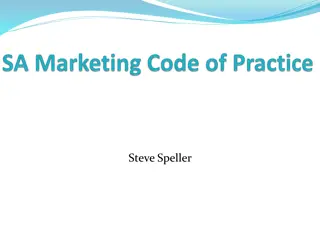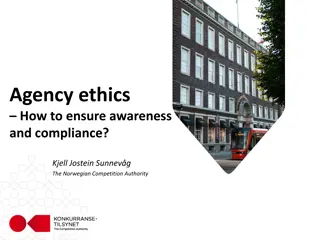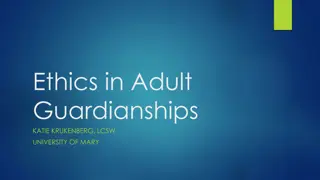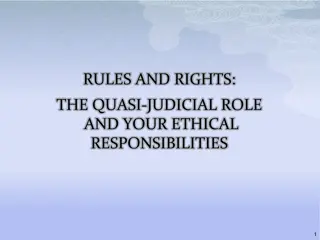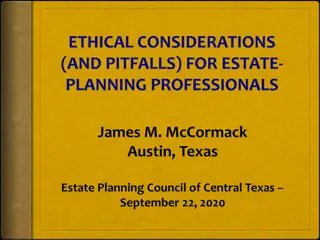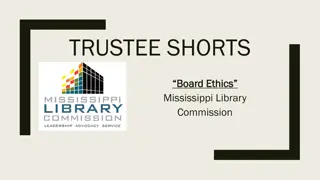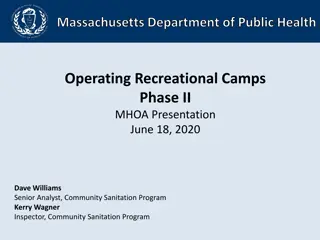Ethical Guidance for Implementing Contingency Standards
This content provides ethical guidance on implementing contingency standards and managing moral distress during the COVID-19 pandemic. It emphasizes the importance of self-care, connecting with others, and staying updated while limiting media exposure. The document also discusses standards of care, including usual, contingency, and crisis standards in healthcare operations.
Download Presentation

Please find below an Image/Link to download the presentation.
The content on the website is provided AS IS for your information and personal use only. It may not be sold, licensed, or shared on other websites without obtaining consent from the author. Download presentation by click this link. If you encounter any issues during the download, it is possible that the publisher has removed the file from their server.
E N D
Presentation Transcript
COVID-19: Ethical Guidance for Implementing Contingency Standards and Managing Moral Distress National Center for Ethics in Health Care (10E1E) April 16, 2020 National Center for Ethics in Health Care National Center for Ethics in Health Care 1 1
A Marathon, not a Sprint Eat, drink, and sleep regularly Take breaks Stay connected with family, friends, and colleagues Stay updated, but limit media exposure Do self check-ins Honor your service Sustaining the Well-Being of Healthcare Personnel during Coronavirus and other Infectious Disease Outbreaks National Center for Ethics in Health Care 2
Questions? Meeting the Challenge of Pandemic Influenza: Ethical Guidance for Leaders and Health Care Professionals in VHA Answers to FAQs can be found at: FAQ: Ethical Challenges Preparing for and Managing COVID-19 vaww.ethics.va.gov Email: vhaethics@va.gov National Center for Ethics in Health Care 3 3
Standards of Care Usual or conventional standards Contingency standards Crisis standards National Center for Ethics in Health Care 4
Standards of Care Usual or conventional standards Based on VA standards (e.g., policy, regulation, SOP) Care in accord with accepted standards of medical practice Patient-centered Contingency standards Crisis standards National Center for Ethics in Health Care 5
Standards of Care Usual or conventional standards Contingency standards Crisis standards National Center for Ethics in Health Care 6
Standards of Care Usual or conventional standards Contingency standards Crisis standards A substantial change in usual health care operations and the level of care it is possible to deliver made necessary by a pervasive or catastrophic disaster. National Center for Ethics in Health Care 7
Standards of Care Usual or conventional standards Contingency standards Crisis standards After all attempts at augmentation have been exhausted and the demand for life-saving health care resources outstrips supply, a necessary shift from patient-centered decision-making to community-centered decision-making. National Center for Ethics in Health Care 8
Standards of Care Usual or conventional standards Contingency standards Crisis standards National Center for Ethics in Health Care 9
Standards of Care Usual or conventional standards Contingency standards Efforts to maintain quality while adapting to the rapidly changing clinical conditions when some health care resources (i.e., space, staff, or supplies) are scarce or when providing them exposes staff to disproportionate risk of harm. Functionally equivalent to conventional standards Crisis standards National Center for Ethics in Health Care 10
Continuum of Care Institute of Medicine (US). Barriers to Integrating Crisis Standards of Care Principles into International Disaster Response Plans. 2012. National Center for Ethics in Health Care 11
Why discuss contingency standards now? Duty to plan VA s 4th Mission Fairness Consistency Transparency Accountability Proportionality Stakeholder engagement Reduce moral distress National Center for Ethics in Health Care 12
Example of Contingency Standard - Staff Modifying scope of clinical practice: Reassigning ENT residents as medical interns Primary care physicians serving as ward attendings Assigning an operating room nurse to ICU Maintaining adequate supervision National Center for Ethics in Health Care 13
Example of Contingency Standard - Supplies Reduce transmission risk without diminishing quality. Substituting nebulized inhaled treatments with metered dose inhalers Modifying requirements for patient signature on informed consent forms Augment capacity through adaptation or substitution Using peritoneal dialysis when there is scarcity of hemodialysis machines Face shields created by medical students National Center for Ethics in Health Care 14
Example of Contingency Standard - Space Telehealth in place of in-person care Opening additional inpatient wards and ICU beds Drive-thru COVID-19 swab testing National Center for Ethics in Health Care 15
Ethically Problematic Implementation of Contingency Standards Practices that harm patients by denying them access to otherwise medically appropriate care Withholding CPR to all patients with COVID-19 Rationing care based on potential resource scarcity Providing ICU-level care on a regular ward without adequate staffing or space Banning all visitors with no consideration for compassionate visitation with dying patients National Center for Ethics in Health Care 16
Maintaining Conventional Standards of Care Using existing ethical and clinical decision- making frameworks CPR Informed consent National Center for Ethics in Health Care 17
Deciding on Contingency Standards Involve subject matter experts and local leadership Team-based decision, not an individual one Is it necessary? Can staff operate under existing standards? When and how will we return to existing standards? Is it effective? Will it address the scarcity or the transmission risk? Is it functionally equivalent to usual care? Is it proportional to the need? Can it be applied consistently and transparently? National Center for Ethics in Health Care 18
Moral Distress Definitions Moral distress happens when an individual experiences conflict between what they feel is ethically appropriate and what they are being requested or required to do. Moral challenges and stressors in everyday health care Intensified in public health crisis Amplified by lack of training and preparation National Center for Ethics in Health Care 20
Areas of Moral Challenge Practicing outside scope of practice Restrictions on delivering care to specific patients Strain of surge on space, staff, and supplies Conflict of obligations Inability to fully honor patient or surrogate preferences Making LST decisions over objections of patient or surrogate Changes in standard of care National Center for Ethics in Health Care 21
VA Authoritative Guidance Can Minimize Moral Distress (Principles) Provision of practical ethical guidance that is useful and feasible Clearly stated ethical norms justified through ethical reasoning that ground guidelines Clinical protocols based on ethical frameworks that enable practitioners and staff to honor professional commitments and respect core values National Center for Ethics in Health Care 22
VA Authoritative Guidance Can Minimize Moral Distress (Practice) Scarce resource allocation and triage structure and process are reasonable, fair, transparent, and legal Preserves the practitioner-patient relationship through shift in locus of decision-making and role sequestration Due process - retrospective review and appeal Criteria that combine person-centered and utilitarian approaches National Center for Ethics in Health Care 23
Organizational Strategies to Meet Moral Challenges Plan and be prepared to move to contingency standards as a means of delaying need for crisis standards Only activate crisis standards after all efforts to augment and expand resources are deemed inadequate Remain in contingency/crisis standards only as long as absolutely necessary National Center for Ethics in Health Care 24
Professional Strategies to Meet Moral Challenges Staff will be following official clinical, ethical, and legal guidance To attain the ethical goal of enabling as many patients as possible to survive and recover VA will not abandon any patient Staff are answering a high moral calling in facing risk to fulfill the duty to care National Center for Ethics in Health Care 25
Personal Strategies to Meet Ethical Challenges Draw on other experiences of positively handling moral stress Wellness, resilience, self-care Spiritual and religious traditions Trust teammates and leaders Learn, read, think, talk, ask, discuss Realistic altruism National Center for Ethics in Health Care 26
Sources and Resources for Moral Distress Sources of Distress Being unprepared Moral uncertainty Fear of legal action Risk of exposure from duty to care Lack of support or opportunity for ethical reflection Resources for Distress Duty to plan Clear ethical guidance Indemnification Institutional reciprocity: PPE, health care, debriefs Formal leadership and ethics support, openness to ethical discussion National Center for Ethics in Health Care 27
References Institute of Medicine (US). Barriers to Integrating Crisis Standards of Care Principles into International Disaster Response Plans: Workshop Summary. Washington (DC): National Academies Press (US); 2012. Ethical Framework for Health Care Institutions & Guidelines for Institutional Ethics Services Responding to the Coronavirus Pandemic. Hastings Center Report. Feb, 2020. Gustavsson ME, Arnberg FK, Juth N, and von Schreeb J. Moral Distress among Disaster Responders: What is it? World Association for Disaster and Emergency Medicine. 2020;35:213-219. Leider JP, DeBruin D, Reynolds N, Kock A, and Seaberg J. Ethical Guidance for Disaster Response, Specifically Around Crisis Standards of Care: A Systematic Review. Am J Public Health. 2017;107:e1-e9


